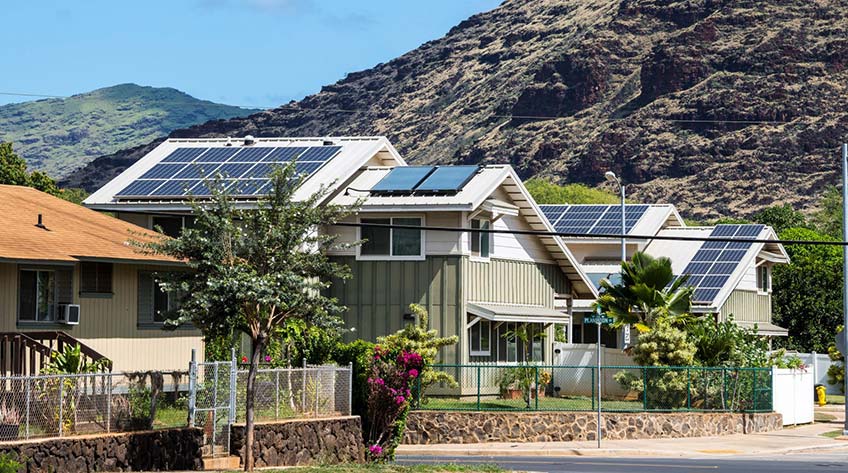Go-Solar Enables Utilities To Efficiently Manage Millions of Solar Photovoltaic Devices

Keeping up with the meteoric increase of solar photovoltaics (PV) on customer rooftops is a challenge for utilities needing to manage the energy flow of those behind-the-meter resources. Go-Solar is a research initiative from the National Renewable Energy Laboratory (NREL) that enables utilities to monitor, estimate, and operate millions of PV arrays through efficient communication with only a small number of devices, instead of needing to connect to every individual rooftop solar system.
Co-funded by the U.S. Department of Energy’s Solar Energy Technologies Office (SETO) ENERGISE program and Hawaiian Electric Company (HECO), Go-Solar researchers have developed technologies for managing large-scale distributed PV systems through two modules. The first is predictive state estimation (PSE), an advanced machine-learning algorithm that communicates with a small number of existing energy sensors to estimate and forecast the operation states of an entire system. PSE facilitates estimation and prediction of an entire system’s conditions from just a few data points. Related matrix-completion algorithms are used by other industries to predict user choices and preferences. For example, Netflix uses a similar algorithm to recommend movies for subscribers by filling in preferences related to their browsing histories.
Go-Solar’s second module is online multi-objective optimization (OMOO), an advanced algorithm that communicates with asynchronous devices in the system, such as capacitor bands and PV arrays, to dispatch the devices at different time scales. The result is the capability to operate and control up to tens of millions of solar energy arrays through a fraction of devices.
“This is the ideal setup for utilities,” said Yingchen Zhang, principal investigator for Go-Solar. “We have developed the technology that can give them an accurate idea of the whole system with only a few sensors.” Utilities can use this information to predict system conditions and integrate solar energy resources into the grid more efficiently.
During the three-year project, Go-Solar researchers have partnered with HECO to use the utility’s real system information, historical data, and transmission and development models to test and refine the Go-Solar algorithms. With the assistance of NREL’s co-simulation framework, Hierarchical Engine for Large-Scale Infrastructure Co-Simulation (HELICS), researchers next plan to achieve a full-scale simulation of the entire Oahu island, a scale of up to one million nodes for approximately 300,000 HECO customers. The Go-Solar technologies will also be implemented in NREL’s hardware-in-the-loop environment to connect real devices and demonstrate the effectiveness of the algorithms in a real-world environment.
In the final year of the project, researchers will additionally identify interfaces for Go-Solar algorithms to be implemented into existing commercial software for utilities and then work with industry partners to develop a pathway for them to adopt that capability for use in new and existing energy systems.
Last Updated May 28, 2025
